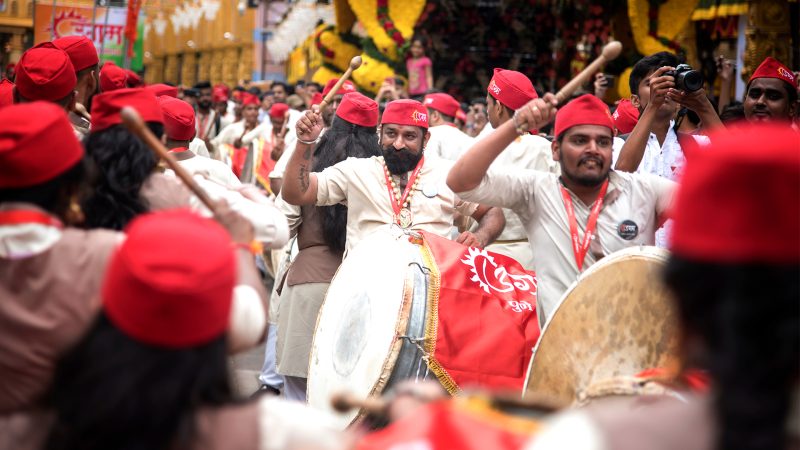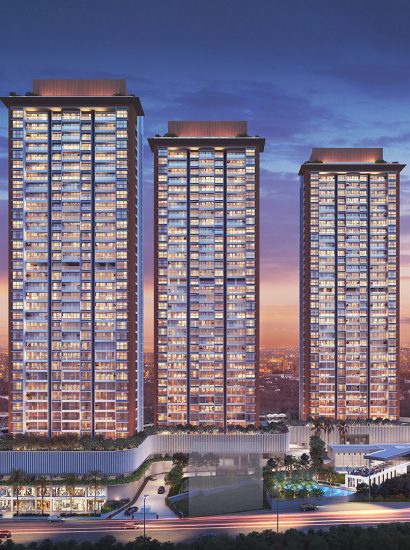Pimpri Chinchwad is a small twin township in the suburbs of Pune. It has its unique culture and heritage, just like any other city. The people of Pimpri widely use Marathi and the majority of them are Hindus, adhering to the Hindu culture. There are people from various places who have migrated for work and thus one can find a wide range of cultures in Pimpri. A King named ‘Bhoj’ who governed this township over 2000 years ago organised many cultural activities such as music, cultural dance, etc.
Lifestyle
Pimpri’s way of life frequently shows the influence of Maharashtrian culture. The second most popular language is Hindi, which is easily understood by everyone.
Maharashtrian dishes are also very popular in Pimpri, despite some differences in the city’s usual local flavour. Pune residents love foods made from jowar and bajra. In the city, people like the sweets Chivda and Bakarvadi. Everyone should try the Mastani, a popular milkshake with dry fruits named after the Queen Mastani of the Peshwas. Pune boasts a considerable number of museums, parks, and gardens, multiplexes as well as pubs.
Festivals
Pimpri has a rich cultural heritage that has been left behind by a diverse past. Ganesh Chaturthi, Dasara, and Diwali are the three main festivals celebrated in Pimpri Chinchwad. Lord Ganesha’s birthday is celebrated as Ganesh Chaturthi, and on this day, a wide range of sweets and dishes are prepared and joyfully offered to the Elephant God. Dasara, often referred to as Vijayadashami, is a significant festival, and businesses and industries are usually shut down on this day. Other common holidays in Pimpri include Sahib, Bahrana, Chalio, Guru Nanak Jayanti, and Navratri.
People of Pimpri
People come from various socioeconomic and religious backgrounds, transforming the city into a multi-ethnic setting. This is only possible in Pimpri because of its appreciation and inclusion of individuals from all religions. The city has created opportunities for financial and economic development, and as a result, international software companies and other professional institutions have been able to establish offices in Pimpri, attracting residents from all over the world and giving the city a cosmopolitan character.
Growth
Pimpri makes up one of India’s largest industrial areas and has greatly contributed to Pune being the second-largest industrial city in Maharashtra after Mumbai. The Pimpri real estate market has already benefited greatly from this fact, but there are many other factors as well. Let’s learn more about this new real estate boomtown and know why it has received so much attention.
Location And Connectivity
To say the least, road access is great. The town of Pimpri Chinchwad is situated at the crossroads of the NH-4 (Mumbai-Bangalore highway) and NH-50 (Pune-Nasik highway).
Indeed, the PCMC area has a vast network of national highways connecting it to important cities such as:
- Mumbai (163 km)
- Nasik (202 km)
- Nagpur (880 km)
- Bangalore (835 km)
- Chennai (1166 km)
- Hyderabad (548 km).
Railways play a crucial role in economic development, and Pimpri Chinchwad is positioned on the Mumbai-Pune mail route. It offers direct connections to Mumbai, Hyderabad, Bangalore, and Chennai.
The Pune airport, which is only 20 km away, has regular direct flights to Kolkata, Mumbai, New Delhi, Bangalore, Chennai, Hyderabad, Dubai, and Singapore.
Industrial Development
In 1954, the introduction of the Hindustan Antibiotics, (government-run pharmaceutical enterprise) served as a significant spur for PCMC’s fast industrialization over the following several years.
To prepare the region for the coming boom, the Maharashtra Industrial Development Corporation (MIDC) purchased enormous tracts of land in 1956, and multinationals like SKF and Phillips, as well as Indian behemoths like Bajaj and Tata quickly established big plants in Pimpri.
PCMC’s industrial portfolio now covers a huge number of engineering units as well as industries such as telecommunications, chemicals, and pharmaceuticals.
The PCMC area emerged as a major employment treasure trove with such a scale of industrial development, and the population surged enormously. Pimpri-Chinchwad is now a metropolis on its own and is truly regarded as Pune’s sister city.
Favourable Climate
Because of its high altitude, moderate annual rainfall, and abundant vegetation, the PCMC region enjoys a refreshing climate all year long. The monsoon season begins in the first week of July and lasts until mid-September.
The average yearly rainfall at PCMC during this time is 700–800 mm. On warm afternoons, relative humidity can be as low as 30% and reaches a maximum of 70–80% during the rainy season.
This is one of the key reasons why so many individuals from different areas decide to move down here.
Ready For A Home In Pimpri?
Due to Pimpri-Chinchwad’s growing popularity as a rich cultural heritage spot and as a residential destination, real estate development has accelerated significantly during the past three to four years.
The presence of contemporary integrated residential developments is one of the PCMC residential property market’s most significant characteristics. The Godrej ICC Pimpri Chinchwad housing developments provide everything needed for a quality life, mostly at prices that are half those in Pune.




